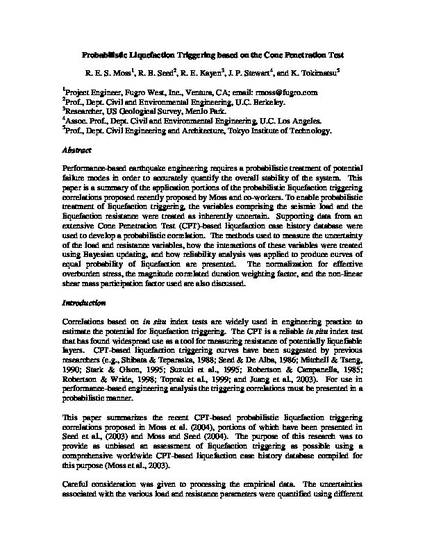
Performance-based earthquake engineering requires a probabilistic treatment of potential failure modes in order to accurately quantify the overall stability of the system. This paper is a summary of the application portions of the probabilistic liquefaction triggering correlations proposed recently proposed by Moss and co-workers. To enable probabilistic treatment of liquefaction triggering, the variables comprising the seismic load and the liquefaction resistance were treated as inherently uncertain. Supporting data from an extensive Cone Penetration Test (CPT)-based liquefaction case history database were used to develop a probabilistic correlation. The methods used to measure the uncertainty of the load and resistance variables, how the interactions of these variables were treated using Bayesian updating, and how reliability analysis was applied to produce curves of equal probability of liquefaction are presented. The normalization for effective overburden stress, the magnitude correlated duration weighting factor, and the non-linear shear mass participation factor used are also discussed.
Available at: http://works.bepress.com/rmoss/22/
